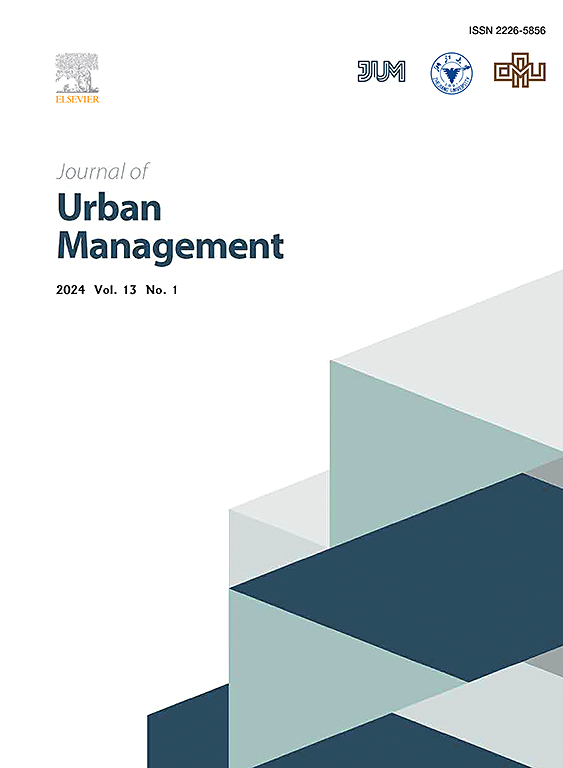Morphological dynamics, landscape fragmentation and climate change vulnerability of actual and predicted urban areas of Lebanon: Application of Multilayer-Perceptron Markov-Chain model
IF 5
2区 社会学
Q1 URBAN STUDIES
引用次数: 0
Abstract
Rapid urbanization in Lebanon poses problems of adaptation to climate change. This article aims to forecast and characterize urban growth, and to cross-analyze urban growth with anticipated temperature and precipitation information. It uses a combination of land use and land cover forecasts with the help of remote sensing and spatial analysis data to provide a comprehensive description of urban growth in Lebanon. The findings reveal that urban growth is mainly driven by road infrastructure and proximity to the coastline, rather than population growth. However, recent changes in agricultural practices are also behind urban and land cover significant evolutions. Urban patterns retain a complex shape over time, with an estimated fractal dimension of 1.7 by the year 2136. The combination of shape, aggregation and connectivity indicators for urban areas reveals a trend towards more compact and dense agglomerations, with the emergence of new centers and sub-centers. Cluster and spot analyses distinguish between clustered urban agglomerations and hotspots in inland areas, and cold spots and separated centers along the coast. Urban vulnerability to climate change is then assessed by cross-referencing information on urban morphology with expected changes in temperature and precipitation. All these elements underline the importance of taking theoretical and natural urban dynamics into account when assessing the impact of urban growth on the environment and society.
黎巴嫩实际和预测城市地区的形态动态、景观破碎化和气候变化脆弱性:多层感知器马尔可夫链模型的应用
黎巴嫩的快速城市化带来了适应气候变化的问题。本文旨在预测和表征城市增长,并将城市增长与预期温度和降水信息进行交叉分析。它在遥感和空间分析数据的帮助下结合使用土地利用和土地覆盖预测,全面描述黎巴嫩的城市增长情况。研究结果显示,城市增长主要是由道路基础设施和靠近海岸线推动的,而不是人口增长。然而,最近农业实践的变化也导致了城市和土地覆盖的重大演变。随着时间的推移,城市格局保持着复杂的形状,到2136年,其分形维数估计为1.7。城市区域形状、聚集性和连通性指标的组合表明,随着新的中心和副中心的出现,城市区域呈现出更加紧凑和密集的聚集趋势。聚类和点分析区分了内陆地区的聚集性城市群和热点地区,沿海地区的冷点和分离中心。然后通过交叉参考城市形态与预期温度和降水变化的信息来评估城市对气候变化的脆弱性。所有这些因素都强调了在评估城市增长对环境和社会的影响时考虑理论和自然城市动态的重要性。
本文章由计算机程序翻译,如有差异,请以英文原文为准。
求助全文
约1分钟内获得全文
求助全文
来源期刊

Journal of Urban Management
URBAN STUDIES-
CiteScore
9.50
自引率
4.90%
发文量
45
审稿时长
65 days
期刊介绍:
Journal of Urban Management (JUM) is the Official Journal of Zhejiang University and the Chinese Association of Urban Management, an international, peer-reviewed open access journal covering planning, administering, regulating, and governing urban complexity.
JUM has its two-fold aims set to integrate the studies across fields in urban planning and management, as well as to provide a more holistic perspective on problem solving.
1) Explore innovative management skills for taming thorny problems that arise with global urbanization
2) Provide a platform to deal with urban affairs whose solutions must be looked at from an interdisciplinary perspective.
 求助内容:
求助内容: 应助结果提醒方式:
应助结果提醒方式:


